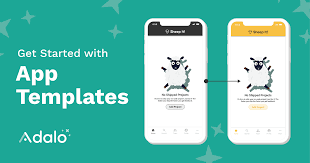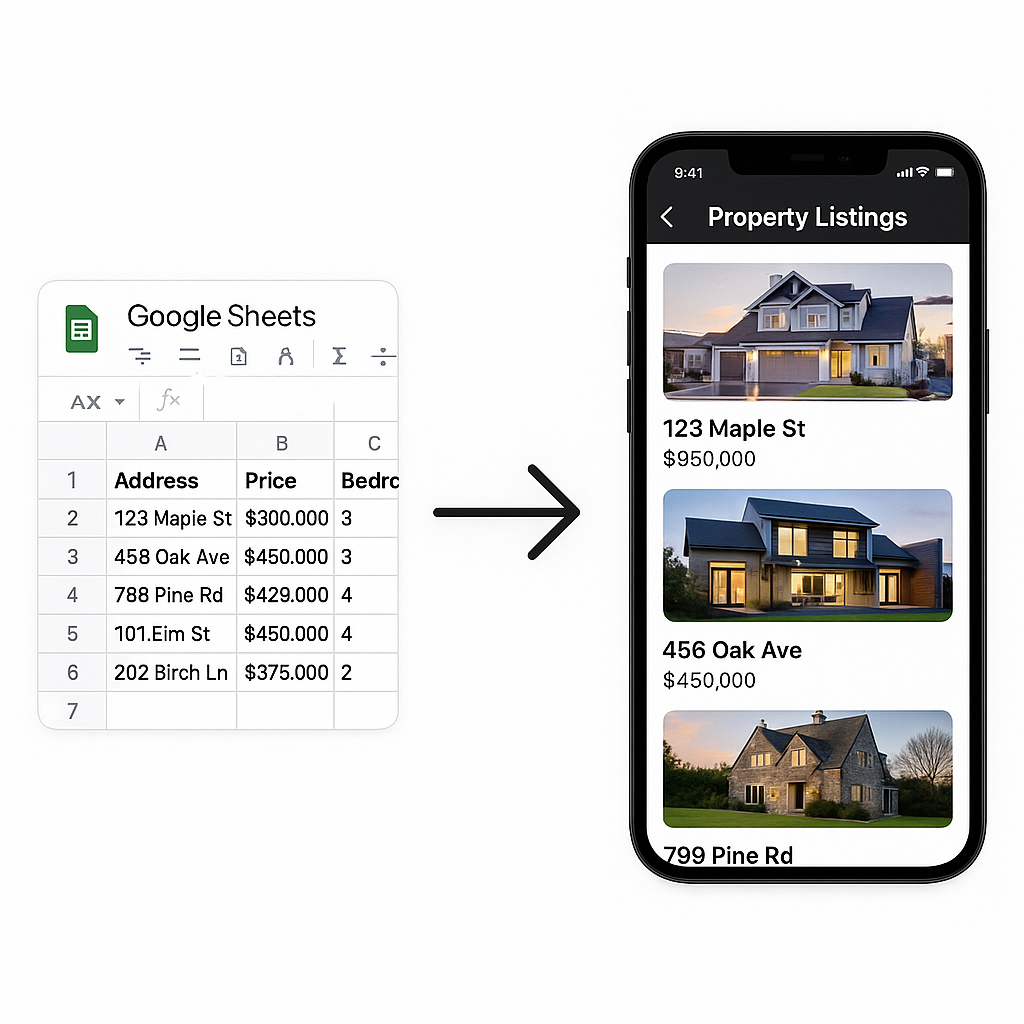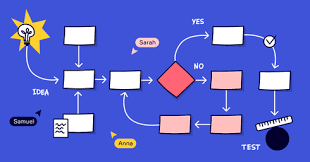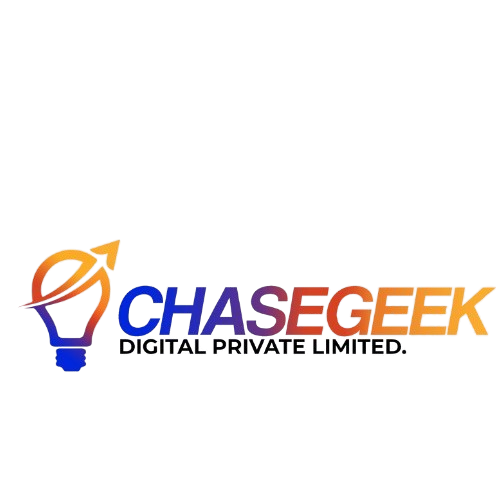
The digital landscape has undergone a revolutionary transformation, and the best no-code platforms are leading this change. By 2025, these platforms have evolved from simple website builders to sophisticated development environments that rival traditional coding in functionality and professional output.
Image Suggestion: Hero image showing a split screen – on one side, traditional coding with complex code syntax, and on the other side, a clean drag-and-drop interface with visual components. Title overlay: “From Code to Visual: The No-Code Revolution”
What Are No-Code Platforms?
No-code platforms are visual development environments that enable users to create applications, websites, and automated workflows without writing traditional code. The best no-code platforms use intuitive drag-and-drop interfaces, pre-built components, and visual logic builders to democratize software development.
The impact is staggering: research indicates that 70% of new business applications will be developed using low-code/no-code technology by 2025. This shift represents more than a trend—it’s a fundamental change in how we approach digital solutions.
Key Benefits of No-Code Development
Image Suggestion: Infographic showing three key benefits with icons – a speedometer for “Speed”, a money bag with downward arrow for “Cost Reduction”, and diverse people icons for “Accessibility”
Speed and Efficiency: Traditional development cycles that once took months can now be completed in days or weeks. This acceleration is crucial for startups validating ideas and enterprises responding to market demands.
Cost Reduction: Organizations can significantly reduce development costs by empowering non-technical team members to create solutions. Instead of hiring expensive development teams, businesses can leverage existing talent.
Accessibility: No-code platforms break down technical barriers, allowing domain experts to directly build solutions for problems they understand intimately.
Top Best No-Code Platforms 2025
Image Suggestion: Collage showing screenshots of different no-code platform interfaces – Bubble’s visual editor, Webflow’s design canvas, Adalo’s mobile app builder, etc. arranged in a grid layout with platform logos
1. Bubble – The Ultimate Web App Builder
Image Suggestion: Screenshot of Bubble’s visual editor interface showing a workflow diagram with nodes and connections, demonstrating the visual programming approach
Bubble stands out as the best no-code platform for comprehensive web application development. This platform offers unprecedented flexibility for creating complex, data-driven applications without traditional coding.
Key Features:
- Visual programming interface with drag-and-drop elements
- Robust database management system
- Workflow automation with trigger-action logic
- Plugin ecosystem for extended functionality
- Multi-user application support with authentication
Best For:
- Marketplaces and e-commerce platforms
- Social networking applications
- Project management tools
- CRM systems
- SaaS applications
Pricing: Free tier available, paid plans start at $29/month
Bubble’s strength lies in its ability to handle complex business logic while maintaining visual simplicity. Entrepreneurs have successfully built and scaled businesses entirely on Bubble, proving its enterprise-grade capabilities.
2. Webflow – Professional Website Development
Image Suggestion: Split screen showing Webflow’s design interface on the left and the resulting beautiful, responsive website on the right, highlighting the visual-to-code transformation
Webflow represents the pinnacle of no-code web design, offering professional-grade website creation capabilities that rival custom development.
Key Features:
- Visual CSS and HTML editor
- Responsive design tools
- CMS functionality
- E-commerce integration
- SEO optimization tools
- Animation and interaction capabilities
Best For:
- Marketing websites
- Portfolio sites
- E-commerce stores
- Corporate websites
- Landing pages
Pricing: Free tier available, paid plans from $18/month
Webflow bridges the gap between template-based builders and custom development, offering designers complete creative control while maintaining code quality and performance.
3. Adalo – Mobile App Development Made Simple

Adalo specializes in mobile application development, enabling users to create native iOS and Android apps through visual development.
Key Features:
- Native mobile app creation
- Cross-platform compatibility
- Database integration
- User authentication systems
- Push notifications
- App store deployment
Best For:
- Mobile-first applications
- Directory apps
- Simple social platforms
- Internal business tools
- Community applications
Pricing: Free tier available, paid plans from $50/month
Adalo’s focus on mobile development makes it ideal for businesses prioritizing mobile-first strategies and entrepreneurs looking to enter the app market quickly.
4. Glide – Transform Spreadsheets into Apps

Glide offers a unique approach by converting existing spreadsheet data into polished mobile applications, making it one of the most accessible no-code platforms.
Key Features:
- Direct integration with Google Sheets and Excel
- Automatic app generation from data
- Real-time data synchronization
- User role management
- Offline functionality
- Custom branding options
Best For:
- Data-driven applications
- Internal business tools
- Inventory management
- Employee directories
- Event management
Pricing: Free tier available, paid plans from $25/month
Glide’s spreadsheet-to-app approach makes it particularly valuable for organizations already managing data in spreadsheets, offering immediate value with minimal setup.
5. Microsoft Power Apps – Enterprise No-Code Solution
Image Suggestion: Professional office setting showing a business user creating an app on Power Apps with Microsoft 365 icons and security badges visible, emphasizing enterprise integration
Microsoft Power Apps provides enterprise-grade no-code development within the Microsoft ecosystem, offering security, compliance, and integration capabilities.
Key Features:
- Integration with Microsoft 365
- Enterprise security and compliance
- AI-powered insights
- Workflow automation
- Data connectivity to 500+ sources
- Mobile and web app creation
Best For:
- Enterprise applications
- Business process automation
- Forms and data collection
- Approval workflows
- Field service applications
Pricing: From $5/user/month
Power Apps excels in enterprise environments where security, compliance, and integration with existing Microsoft systems are paramount.
6. Wix Editor X – Advanced Website Builder
Image Suggestion: Designer workspace showing Wix Editor X interface with advanced layout tools, CSS grid visualizations, and multiple device previews
Wix Editor X combines the accessibility of traditional website builders with advanced design capabilities, targeting designers and agencies.
Key Features:
- CSS Grid layouts
- Responsive design controls
- Advanced animations
- Client collaboration tools
- White-label capabilities
- E-commerce functionality
Best For:
- Agency websites
- Client projects
- E-commerce sites
- Portfolio websites
- Marketing pages
Pricing: From $22/month
Editor X provides the design flexibility professionals need while maintaining the visual development approach that makes no-code accessible.
Industry Analysis and Trends
Image Suggestion: Infographic showing market growth statistics with upward trending graphs, global adoption rates, and key statistics like “70% of new apps” and “$32.9 billion market”
The No-Code Revolution Impact
The no-code movement represents a fundamental shift in software development, driven by several key factors:
Developer Shortage: With global demand for software exceeding the supply of skilled developers, no-code platforms help bridge this gap by enabling non-technical users to create solutions.
Digital Transformation Acceleration: Organizations need to digitize processes quickly, and no-code platforms provide the speed and agility required for rapid digital transformation.
Citizen Development: Gartner predicts that 75% of large enterprises will adopt citizen development by 2025, with business users creating applications to solve their own problems.
Market Growth and Adoption
The no-code market is experiencing explosive growth:
- Market Size: The global no-code development platform market is projected to reach $32.9 billion by 2025
- Adoption Rate: Over 500 million apps will be developed using cloud-native approaches by 2025
- Enterprise Adoption: 75% of large enterprises will use at least four low-code/no-code tools by 2025
Regional Trends: India’s No-Code Landscape
Image Suggestion: Map of India with tech hubs highlighted (Mumbai, Bangalore, Delhi, Chennai) showing no-code adoption icons and startup success stories
India has emerged as a significant adopter of no-code platforms, particularly in the startup ecosystem:
Startup MVPs: Many Indian startups use no-code platforms for rapid prototyping and MVP development, reducing time-to-market and development costs.
SME Digitization: Small and medium enterprises leverage no-code platforms to create customer-facing applications and internal tools without substantial IT investments.
IT Services Evolution: Indian IT service companies now offer no-code development services, adapting their business models to include rapid no-code solutions.
Choosing the Right Platform

Evaluation Criteria
When selecting the best no-code platforms for your needs, consider these factors:
1. Project Complexity
- Simple websites: Webflow or Wix Editor X
- Complex web applications: Bubble
- Mobile apps: Adalo
- Data-driven tools: Glide or Power Apps
2. Technical Requirements
- Database needs
- Integration requirements
- Scalability expectations
- Performance demands
3. Budget Considerations
- Initial development costs
- Ongoing subscription fees
- Scaling costs
- Training expenses
4. Team Capabilities
- Technical skill levels
- Design requirements
- Learning curve tolerance
- Support needs
Platform Comparison Matrix
Image Suggestion: Visual comparison chart with platform logos, feature icons, and color-coded ratings for different categories like ease of use, features, and pricing
| Platform | Best For | Complexity | Mobile | Price Range |
|---|---|---|---|---|
| Bubble | Web Apps | High | Web-based | $29-$529/month |
| Webflow | Websites | Medium | Responsive | $18-$212/month |
| Adalo | Mobile Apps | Medium | Native | $50-$200/month |
| Glide | Data Apps | Low | Mobile-first | $25-$100/month |
| Power Apps | Enterprise | High | Both | $5-$20/user/month |
| Wix Editor X | Agency Sites | Medium | Responsive | $22-$159/month |
Implementation Strategy
Image Suggestion: Timeline or roadmap showing three phases with checkpoints, team icons, and success metrics along the implementation journey
Phase 1: Assessment and Planning
Identify Suitable Projects Start with projects that are:
- Data-driven and form-based
- Currently managed through spreadsheets
- Prototype or MVP concepts
- Internal process improvements
Team Preparation
- Identify potential citizen developers
- Provide basic training on chosen platforms
- Establish governance guidelines
- Create support structures
Phase 2: Pilot Implementation
Start Small Begin with low-risk projects to:
- Build confidence and skills
- Demonstrate value
- Identify best practices
- Refine governance processes
Platform Evaluation Use free tiers and trials to:
- Test platform capabilities
- Assess learning curves
- Evaluate integration needs
- Measure development speed
Phase 3: Scaling and Optimization
Governance Framework Establish guidelines for:
- Data security and compliance
- Application standards
- User access controls
- Maintenance procedures
Training and Support Implement comprehensive training programs:
- Platform-specific certifications
- Best practice workshops
- Community building
- Ongoing support structures
Success Stories and Case Studies
Image Suggestion: Collage of success stories with before/after comparisons, showing traditional development timelines vs. no-code speed, with Indian startup logos and growth metrics
Startup Success: Rapid MVP Development
A Mumbai-based fintech startup used Bubble to create their lending platform MVP in just 3 weeks, compared to the 6-month timeline estimated for traditional development. This acceleration allowed them to enter the market quickly and secure seed funding.
Enterprise Transformation: Process Automation
A multinational corporation implemented Microsoft Power Apps to digitize their expense approval process. The no-code solution reduced processing time from 2 weeks to 2 days while improving accuracy and compliance.
SME Innovation: Customer Engagement
A Chennai-based retail chain used Adalo to create a customer loyalty app, increasing customer engagement by 40% and repeat purchases by 25% within six months of launch.
Future of No-Code Development
Image Suggestion: Futuristic visualization showing AI integration, advanced automation, and emerging technologies like AR/VR being integrated into no-code platforms
Emerging Trends
AI Integration: Future no-code platforms will incorporate AI to assist with design decisions, content creation, and logic building.
Advanced Integrations: Deeper connections with enterprise systems, IoT devices, and third-party services will expand no-code capabilities.
Industry-Specific Solutions: Specialized no-code platforms for specific industries (healthcare, finance, education) will emerge.
Challenges and Limitations
Complexity Boundaries: While no-code platforms are powerful, they still have limitations for highly complex or performance-critical applications.
Vendor Lock-in: Organizations must consider long-term implications of platform dependency.
Governance Needs: As no-code adoption grows, robust governance frameworks become essential.
FAQs
Image Suggestion: FAQ section header with question mark icons and common no-code related symbols like drag-and-drop cursors, building blocks, and platform logos
What is the best no-code platforms for beginners?
For beginners, Glide offers the most accessible entry point, especially if you already work with spreadsheets. Its intuitive interface and direct data integration make it ideal for first-time no-code developers. For web development, Webflow provides excellent tutorials and a supportive community.
Can no-code platforms handle complex business applications?
Yes, platforms like Bubble and Microsoft Power Apps can handle sophisticated business logic, user management, and data processing. However, extremely complex applications with heavy computational requirements may still require traditional development.
How much does it cost to build an app using no-code platforms?
Costs vary significantly based on platform choice and complexity:
- Simple apps: $25-$100/month
- Business applications: $100-$500/month
- Enterprise solutions: $500-$2000/month
These costs are typically 60-80% lower than traditional development.
Are no-code apps secure and compliant?
Enterprise-grade platforms like Microsoft Power Apps offer robust security features and compliance certifications. For regulated industries, choose platforms with specific compliance credentials and security audits.
What’s the difference between no-code and low-code?
No-code platforms require zero coding knowledge and use purely visual interfaces. Low-code platforms may require some coding or scripting for advanced functionality but still provide visual development environments.
Can I migrate from one no-code platform to another?
Migration complexity depends on the platforms involved. Some platforms offer export capabilities, while others may require rebuilding applications. Consider long-term platform strategy during initial selection.
How do no-code platforms handle scalability?
Most professional no-code platforms can scale to handle thousands of users and significant data volumes. However, extremely high-traffic applications may require optimization or migration to traditional development.
What skills do I need to use no-code platforms?
Basic computer literacy and logical thinking are sufficient for most no-code platforms. Experience with spreadsheets (Excel/Google Sheets) is helpful for platforms like Glide and Power Apps. Design sense is beneficial for visual platforms like Webflow and Wix Editor X.
How long does it take to build an app with no-code?
Development time varies by complexity:
- Simple apps: 1-7 days
- Medium complexity: 2-6 weeks
- Complex applications: 1-3 months
This represents a 60-80% time reduction compared to traditional development.
Are there any limitations to what I can build with no-code?
While no-code platforms are powerful, they have limitations:
- Complex algorithms or heavy computations
- Highly specialized integrations
- Applications requiring custom server configurations
- Real-time applications with extreme performance requirements
For such needs, consider hybrid approaches combining no-code with custom development.
Can I export my no-code application?
Export capabilities vary by platform:
- Webflow: Exports clean HTML/CSS/JS code
- Bubble: Limited export options, primarily platform-hosted
- Power Apps: Integrates with Microsoft ecosystem
- Adalo: Generates native mobile apps for app stores
Consider export requirements during platform selection if portability is important.
What’s the total cost of ownership for no-code apps?
Total costs include:
- Monthly platform subscriptions ($25-$500/month)
- Additional features and integrations
- Training and support
- Potential migration costs
Despite ongoing costs, TCO is typically 50-70% lower than traditional development when considering development speed and reduced technical requirements.
How do I ensure my no-code app is secure?
Security best practices include:
- Choose platforms with security certifications (SOC 2, ISO 27001)
- Implement proper user authentication
- Regular security audits
- Follow platform-specific security guidelines
- For enterprise use, select platforms with enterprise security features
Platforms like Microsoft Power Apps and Bubble offer enterprise-grade security suitable for business applications.
Can multiple people work on a no-code project simultaneously?
Most professional no-code platforms support collaboration:
- Bubble: Team workspaces with role-based access
- Webflow: Real-time collaboration features
- Power Apps: SharePoint integration for team development
- Adalo: Team management and sharing capabilities
Choose platforms with robust collaboration features for team projects.
What happens if a no-code platform shuts down?
Platform shutdown risks can be mitigated by:
- Choosing established platforms with strong financial backing
- Selecting platforms with export capabilities
- Maintaining backups of your data
- Having contingency plans for critical applications
- Considering hybrid approaches for mission-critical systems
Established platforms like Microsoft Power Apps, Webflow, and Bubble have strong market positions and financial stability.
Ready to Start Your No-Code Journey?
The best no-code platforms of 2025 offer unprecedented opportunities to bring your ideas to life without traditional coding barriers. Whether you’re a startup founder, business owner, or simply someone with a great idea, The best no-code platforms provide the tools to transform concepts into reality.
Start building today with one of these recommended approaches:
- For Web Applications: Begin with Bubble’s free tier to create your first web app
- For Professional Websites: Try Webflow’s free plan to build stunning websites
- For Mobile Apps: Explore Adalo’s free version to create your first mobile application
- For Data-Driven Apps: Test Glide’s free tier to transform spreadsheets into apps
The no-code revolution is reshaping how we build digital solutions. Don’t let technical barriers hold back your next big idea. Choose the platform that fits your needs, start building, and join the millions of creators already leveraging these powerful tools.
Need expert guidance on implementing no-code solutions? Contact our team at ChaseGeek for personalized consultation and support in choosing and implementing the right no-code platform for your specific needs.

